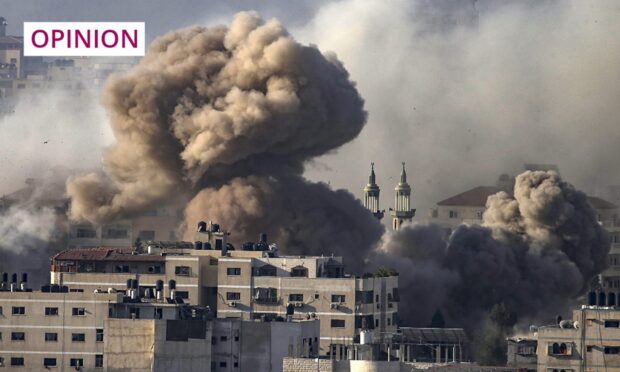I was born, raised and indoctrinated in the state of Israel. My maternal grandparents were Holocaust survivors.
I served in the Israeli military between 1982 and 1984, when Israel invaded Lebanon for the second time. While I was a soldier, Israel trained and armed the Lebanese Christian militia who committed the horrific massacre in the Sabra and Shatila refugee camps. The Israeli military stood by. My role in the army made me complicit.
As a child, I was taught that all “Arabs” – the word “Palestinians” did not exist in Israeli vocabulary then – wanted to annihilate us. We were made to believe that, just like the Nazis, all Arabs were anti-semites who hated us for being Jews. We were a peace-loving, moral and ethical people who would never hurt anyone, except in self-defence.
The Israeli education system told us we were direct descendants of the biblical people of Judaea who were exiled by the Romans in 70 AD. In truth, Israeli historians knew that the Romans never exiled whole populations. They promoted this false narrative to help create an Israeli national identity, and provide justification for Israel’s existence.
According to the story, we simply “returned” to our ancestral home in 1948, and there was nothing wrong with that. All Israelis are taught to believe that the world hated Jews and never wanted us to live in peace and quiet in our own country.
Twenty-two years ago, a decade after moving to Australia, I began to wake up from the stupor of my indoctrination. I realised the so-called “conflict” with the Palestinian people was not what I thought it was. What I believed was my identity and history turned out to be a myth that hid a dark secret of the terrible crime we had committed against our fellow humans. Israel was neither good nor innocent.
Why is nobody asking the key questions about Gaza?
In the late 19th century, the Zionist movement decided that the only solution to Jewish persecution was a Jewish “national home”. They imagined an exclusively Jewish state where Jews could live amongst themselves without fear. The problem was that Palestine, the territory they chose for the future Jewish state, was already populated.
The Zionists always intended to remove and replace the non-Jewish indigenous people of Palestine to create an exclusively Jewish state. Zionism was, and still is, a settler-colonial programme.
In the current onslaught of pro-Israel reporting in the media, few are asking key questions. Who are the people of Gaza? How did they come to be there, and how did Gaza become so overpopulated and so impoverished?
Who are the people living in the ever-diminishing and surrounded occupied West Bank? Why is there a problem between the Israeli state and the Palestinian people? Why are the Palestinians resisting?
When the budding state of Israel ethnically cleansed 750,000 Palestinians in 1948 and destroyed their towns and villages, the victims dispersed all over the Middle East. The present population of Gaza are the descendants of the original refugees, as are the stateless Palestinians living in refugee camps in Lebanon, Syria, and those who live in the West Bank.
No one has to justify supporting the victims of a crime
Those who have been following this so-called “conflict” are familiar with Israel’s persistent expansion of its colonies (settlements) in the West Bank, and the endless, quasi-legal “administrative” measures intended to push Palestinians to leave.
Daily and relentless Israeli brutality is invisible to the world, but the Palestinians have had to live with it for decades. Many of the measures Israel has been using against Palestinians are in blatant violation of international law, but this has never bothered Israel. Faithful to the original Zionist project, Israel has always wanted all the land but without the people, and everyone in Israel knows it.
Oppressed people facing removal or annihilation will always try to resist
The Palestinian presence, their refusal to just disappear or die, has been a problem for Israel, because it cannot finish plundering historic Palestine and its resources while they are still there. Oppressed people facing removal or annihilation will always try to resist. Palestinian resistance over the decades has been mostly peaceful. But Israel has always responded with brutality and murder.
Israel is a settler-colonial state, and its victims are the colonised, oppressed, abused, and ethnically cleansed Palestinians. No one has to justify supporting the victims of a crime. Those who support Israel have a duty to explain why they support the crime of settler-colonialism.
Avigail Abarbanel is a psychotherapist based in the Scottish Highlands, and the editor of book Beyond Tribal Loyalties: Personal stories of Jewish Peace Activists


Conversation